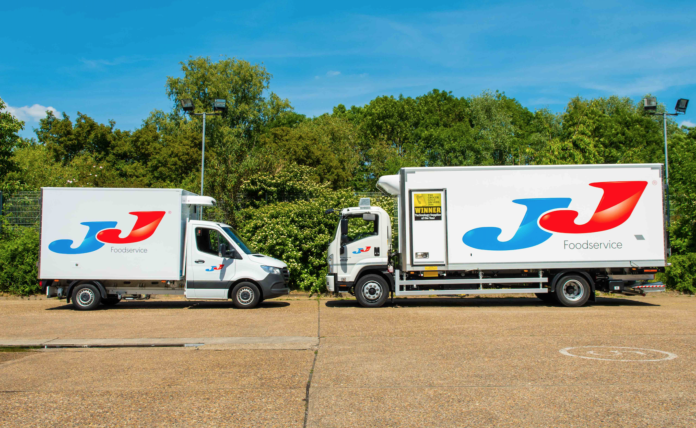Paul Hill looks at the future of the foodservice sector’s relationship with the B2C market
Last month, JJ Foodservice announced its intention to continue its B2C model on a permanent basis following the relaxation of lockdown measures.
Introduced during the pandemic as a stop gap, JJ Home offered the wholesaler’s range of products to households, with more than 30,000 homes supplied over the initial three-month period. However, due to its popularity it has now relaunched as a permanent fixture, with the company also investing in a vehicle fleet of 12 smaller delivery vans in order to support it.
“People are adapting to new ways of life”, said chief product officer for Sezer Ozkul. “Consumers are shopping less frequently, buying bigger packs and using more private labels to make savings. These trends are set to continue.”
News analysis: What the easing of lockdown means for the channel
Lumina Intelligence’s research backs up JJ’s investment, with the insight business claiming that consumers were already becoming more varied in the channels they used to shop even before the lockdown. “Our Omnichannel Tracker for Q4, 2019 showed that over 85% of consumers who had purchased from a supermarket in the past week, also purchased from a convenience store, discounter, online retailer or an online food/drink delivery service,” explained its head of insight Blonnie Walsh.
Katie Jenkins, marketing director of KAM Media, meanwhile, described how foodservice wholesalers recognised a consumer need and acted quickly. “Wholesalers were fast to realise that they could step in and fulfil a need which the supermarkets were failing to meet. 14% of consumers which we spoke to have taken advantage of this direct to consumer service.
“Consumers have told us that they joined forces and bulk ordered for their neighbours so that they could order certain products like eggs and flour and meat and raved about the quality. The increase of consumer sized SKUs will prove popular.”
However, KAM’s research shows consumers over the age of 55 were much less aware that this service was available, even in lockdown. “This shows there are clear opportunities for wholesalers to improve communication and raise awareness with potential customers,” added Jenkins.
In his opinion piece for a recent edition of Better Wholesaling, David Gilroy pointed out that it wasn’t just the general public that will continue to buy from foodservice wholesalers in the future, but the ever-growing list of companies with a home-based workforce. A customer sector that walks the line between B2B and B2C.
“There are around 48,000 small food and drink retailers and some 250,000 hospitality outlets in the UK. Then there’s the 4.5m self-employed workers. Many running their own businesses from home,” he said. “A few of my self-employed contacts have started shopping at cash and carries and they love it. They like the bulk displays, the case sizes, the prices and the atmosphere.”
“I’ve long argued that wholesalers should be broadening their customer bases. Covid-19 has accelerated a number of trends such as home delivery, online and mobile device app purchasing. Broadening customer reach is another such trend that is now absolutely right for the times,” he concluded.
Alongside JJ, the likes of Savona, Dunsters and Harvest have also been successful in running a B2C operation over lockdown and have continued it since the reopening of the hospitality sector. The latter has now even has a bespoke web site for it as well as social media channels. This is evidence that it might well become the norm for the industry and help secure its long-term future.
It appears that this was a market ready to swept up by foodservice wholesalers and the lockdown gave them the excuse to implement it into their operations.








